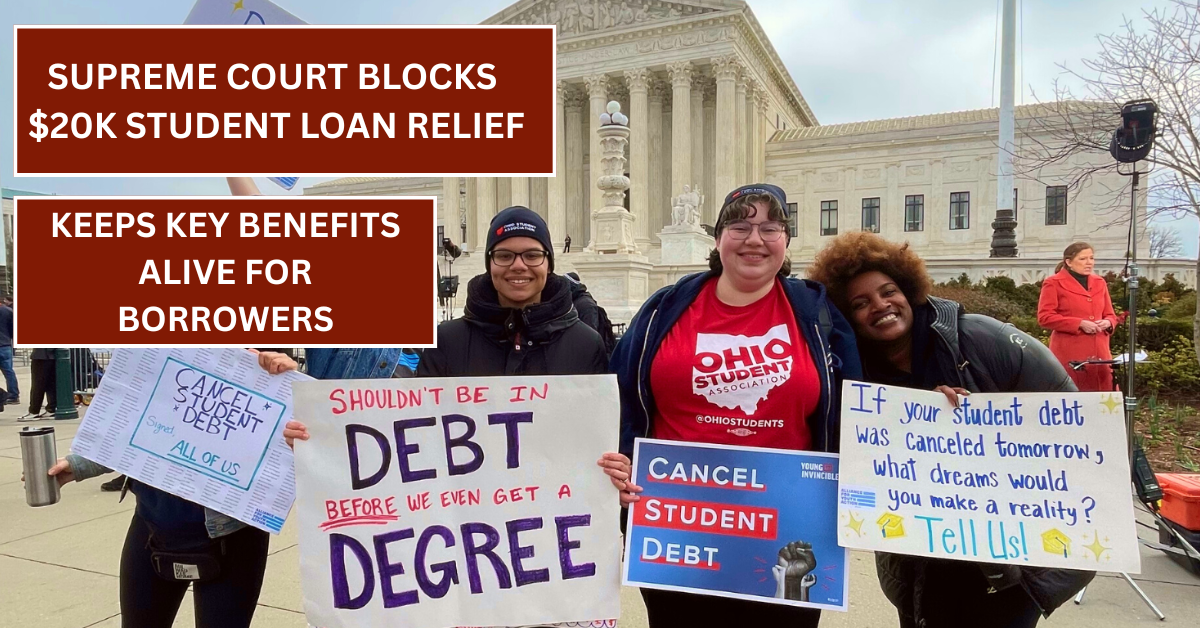
Student loans are a huge concern for many young people today, especially for those planning to study abroad or finance higher education through loans. The recent budget bill introduced by former President Trump has brought some major changes that can affect how student loans work, especially in the U.S. but with important implications for borrowers worldwide.
This article will explain eight key changes in simple terms, helping borrowers stay informed and make smart decisions about their loans. If you’re a student or parent with ongoing loans or planning future education, it’s crucial to understand what these changes mean and what steps you should take next.
1. Limits Reduced for Grad PLUS Loans
This Article Includes
- 1 1. Limits Reduced for Grad PLUS Loans
- 2 2. No More Interest Capitalization
- 3 3. Pell Grant Maximum Increased by $750
- 4 4. $600 One-Time Interest Rebate for Borrowers
- 5 5. Perkins Loan Consolidation Time Extended
- 6 6. Urgent: Recertify Your Income ASAP
- 7 7. Impact on Income-Driven Repayment Plans
- 8 8. How These Changes Affect International Students and Borrowers
- 9 Next Steps: What Borrowers Should Do Now
One of the biggest changes is the reduction in the loan limits for Grad PLUS loans, which many graduate students use to cover education costs. The budget bill cuts the maximum amount students can borrow under these loans, making it more important to plan your expenses carefully. If you rely heavily on Grad PLUS loans, consider other funding options or scholarships to avoid running short of funds.
2. No More Interest Capitalization
Previously, unpaid interest on student loans would get added to the principal amount, increasing the total loan you owe — a process called interest capitalization. The new bill stops this practice, which means unpaid interest won’t automatically increase your loan balance. This change can save borrowers thousands in extra costs over time, making repayment more manageable.
3. Pell Grant Maximum Increased by $750
The Pell Grant, a popular form of financial aid for low-income students, gets a boost under the new bill. The maximum amount a student can receive has increased by $750. This means more money without needing to be repaid, easing financial pressures on students and encouraging more people to pursue higher education.
4. $600 One-Time Interest Rebate for Borrowers
The budget bill also provides a one-time $600 rebate to help reduce interest costs on student loans. This money helps borrowers pay down some of the interest accumulated on their loans, making future payments lower. If you have a student loan, make sure to check if you qualify for this rebate and apply as soon as possible.
5. Perkins Loan Consolidation Time Extended
The bill extends the time period during which borrowers can consolidate Perkins loans with other federal student loans. Loan consolidation can simplify payments by combining multiple loans into one. This extra time gives borrowers more flexibility to take advantage of consolidation benefits and possibly qualify for better repayment plans.
6. Urgent: Recertify Your Income ASAP
Because of the changes in loan limits and consolidation rules, it’s important for borrowers to recertify their income quickly. Income information affects eligibility for loan forgiveness and income-driven repayment plans. Submitting updated income details ensures you get the right repayment amount and avoid surprises later.
7. Impact on Income-Driven Repayment Plans
Changes like removing interest capitalization and extending consolidation affect how your monthly payments are calculated, especially if you’re on an income-driven repayment plan. With fewer increases from interest and better repayment options, monthly payments could become more affordable after recertification.
8. How These Changes Affect International Students and Borrowers
While the bill is U.S.-focused, Indian students who study in the U.S. often rely on federal loans or work with U.S. lenders. These changes impact loan availability, repayment, and benefits, making it crucial to stay updated. Indian borrowers should consult with loan advisors and update their loan profiles in line with new rules.
Next Steps: What Borrowers Should Do Now
If you have student loans or are planning to take them, act quickly. Start by recertifying your income to get the best repayment terms. Check eligibility for the $600 interest rebate and consider consolidating Perkins loans if you qualify. Also, review your loan limits and financial plans to avoid borrowing more than necessary.
Understanding these eight changes can help Indian students and borrowers make smart choices and reduce the burden of student loans. Keep yourself informed, stay in touch with your loan servicer, and plan your education funding carefully to take full advantage of these new rules.







































